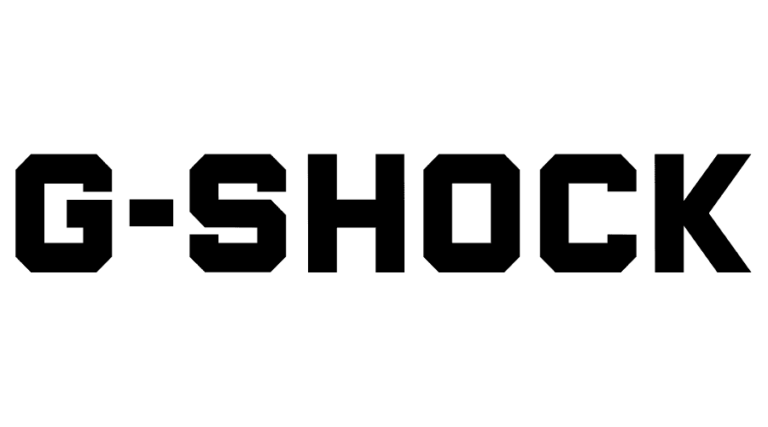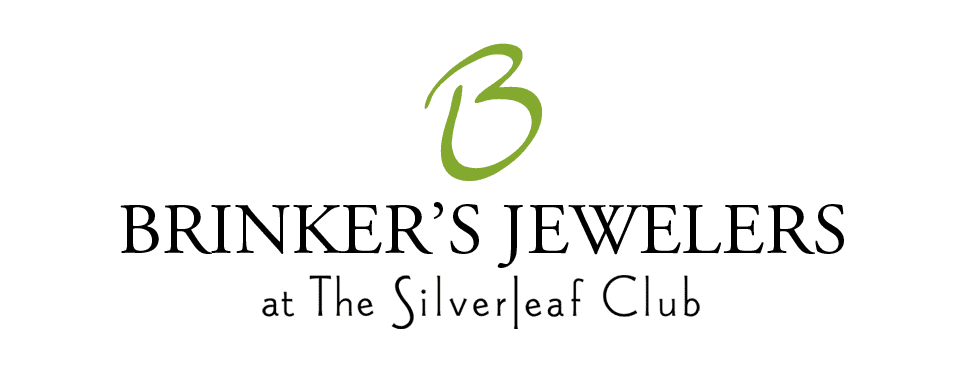Few life events inspire excitement like planning to ask for your loved one’s hand in marriage. But such a major step will always cause a degree of nervousness and fear as well, no matter how much you love this person or how much you want to spend the rest of your life with them. From future wedding planning to the uncertainty of your loved one’s response to the simple enormity of the step you are taking, planning to propose has many emotional extremes tied up in it.
The selection of the perfect engagement ring is a major decision and it should not be taken lightly. To help take the pressure off, we’ve created this informative guide to help you pick the perfect ring so you can ask the right questions and focus on thee right things as you navigate the most most important part of your engagement: the engagement ring itself.
Even with the changing times, a beautiful diamond engagement ring is still the perfect symbol of your love and affection for your future spouse. Of course, when it comes to true love, your significant other will gladly take your hand regardless of the ring. Still, the perfect diamond will serve as a life-long symbol of your love for each other and solidify your bond in a way that lesser rings may not. When shopping for a diamond engagement ring, it’s a good idea to understand the different kinds of diamonds you may come across.
With the right partners in the diamond industry, learning about the different cuts and shapes of diamonds is a breeze. Thanks to the dedicated professionals at Brinker’s Jewelers, you can learn all you need to know about the different cuts and shapes of diamond engagement rings without any extra hassle.
WHAT IS THE DIFFERENCE BETWEEN A DIAMOND CUT AND A DIAMOND SHAPE?
A good jeweler will offer a large selection of diamond engagement rings for you to choose from. If you are unfamiliar with diamonds, the number of potential engagement rings can seem intimidating at first. But fortunately, the different types of diamonds are easier to understand than you may initially fear. When shopping for a diamond engagement ring, the most important thing to understand is the difference between a diamond’s “shape” and a diamond’s “cut.”
At first glance, a diamond’s shape and cut may seem like the same thing, and most casual diamond shoppers may assume they are. To be sure, when it comes to diamonds, “shape” and “cut” are closely related. Let us take a look at how they are similar and how they are different.
CUT VS. SHAPE
A classic round diamond shape is probably the first thing that comes to mind when you picture a diamond ring in your head. In engagement rings, diamonds usually come in a few more common shapes. For example, the most common engagement ring diamonds are either round shapes (also known as “round brilliants”) or square shapes (also known as “princess cuts”). However, diamonds can also come in pear shapes, heart shapes, cushion shapes, and several other shapes for a variety of different preferences.
A diamond’s “cut” is slightly more confusing, given that “shape” and “cut” are often used interchangeably when referring to diamond engagement rings. However, the cut of a diamond refers to how the jeweler specifically cut and polished the diamond into its shape.
A diamond’s cut includes its symmetry, the size and proportion of its angles, its facets, its depth, and its polish. Different diamonds in the same general shape can have somewhat different cuts. For example, two round diamonds can be cut into different numbers of facets and different degrees of symmetry.
FINDING THE BEST DIAMOND FOR YOU
For diamond engagement rings, the shape of the diamond may be the first thing you notice. But the diamond cut is what makes it stand out and what will turn a regular diamond ring into something that will truly shine on your loved one’s finger. For example, the diamond cut determines how light moves within the diamond. This, in turn, determines how much the diamond sparkles and shines within the light.
When learning about different diamond rings from your jeweler, you may hear terms such as “fire,” “scintillation,” and “brilliance,” which may be a bit overwhelming if you’re not familiar with them. But all of these terms refer to how light passes through the diamond and makes the diamond shine. And this shine is possible thanks to the diamond cut.
When choosing the best diamond engagement ring, a diamond’s cut is just as important as its shape. A bigger diamond may be more expensive just because of its size, but with a lesser cut, it will not shine with the same brilliance as a smaller diamond with a better cut. So, when shopping for the perfect diamond engagement ring cut, you should pay the closest attention to both the overall shape of each ring and the brilliance and sparkle that comes from its specific cut.
When looking for a diamond ring that will stand the test of time, shape and cut are more important factors to look at then other aspects of a diamond, such as its carat weight.
A VARIETY OF DIAMOND CUTS AND SHAPES TO CHOOSE FROM
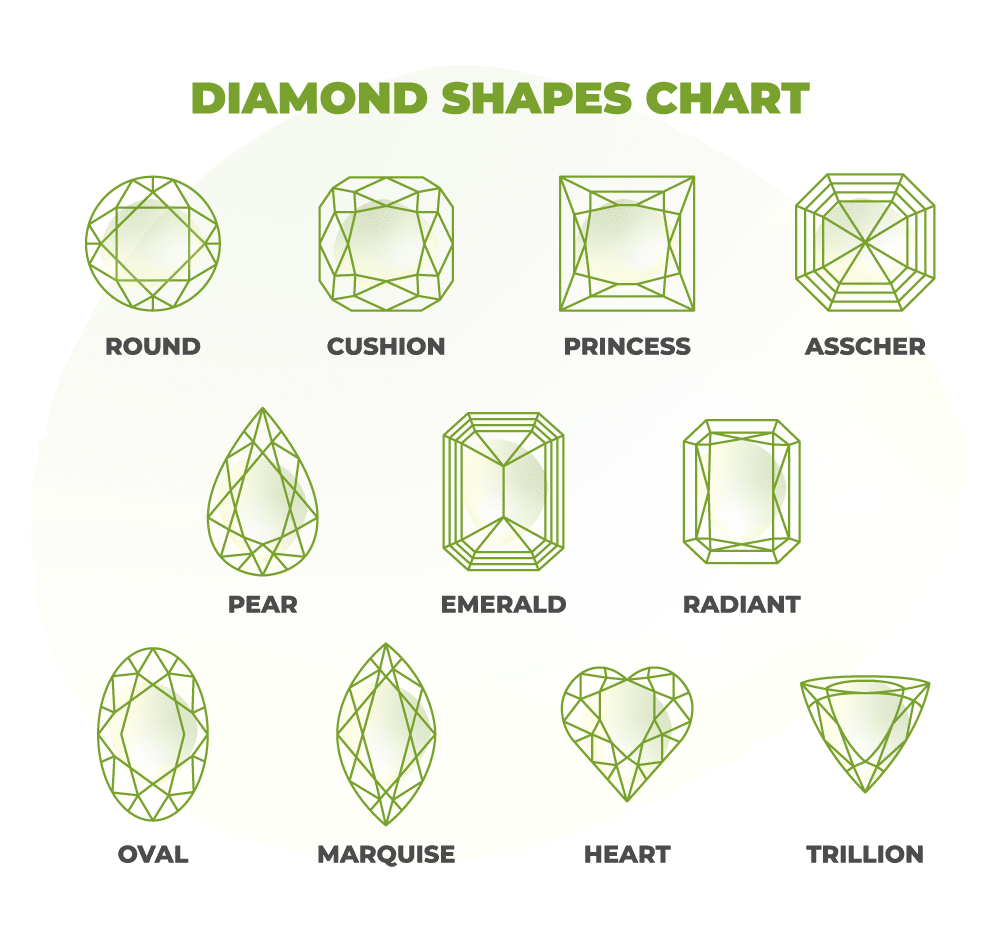
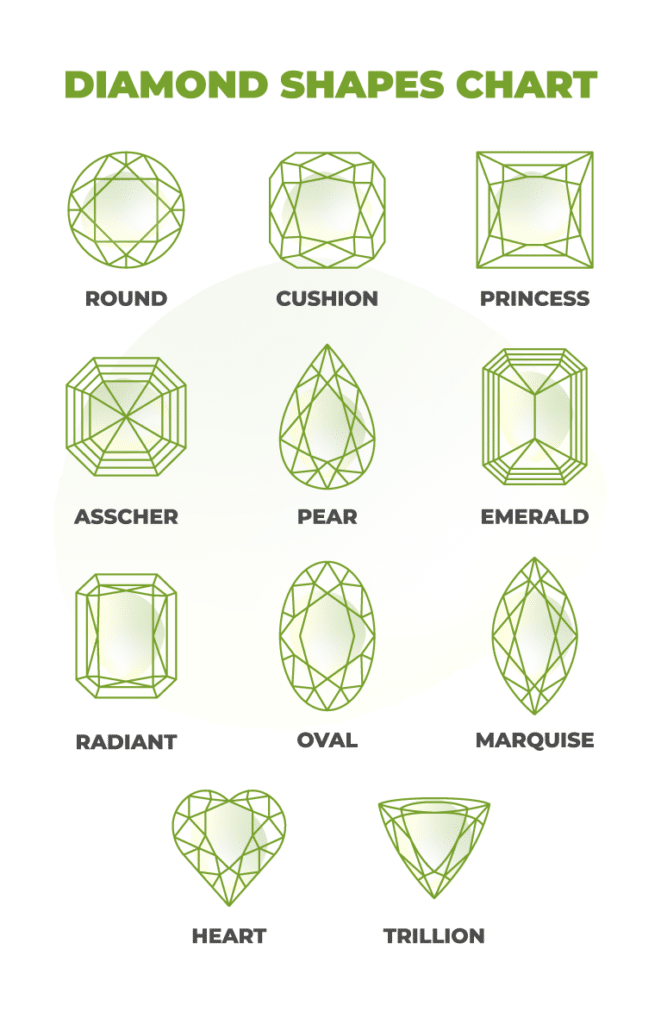
ROUND CUT DIAMOND
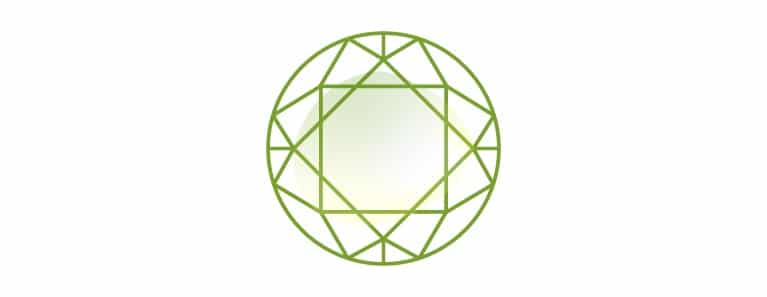
Round cut diamonds are diamonds cut into a circular shape without sharp sides or angles. One of the main advantages of the round cut for diamonds is that this particular shape maximizes the diamond’s sparkle.
The circular shape allows the diamond’s numerous facets to align in the greatest proportion, which maximizes the amount of light that bounces back when entering the diamond. Because of their brilliance and recognizable shape, round-cut diamonds are currently the most popular cut of diamonds for engagement rings.
COMPARE THIS CUT TO:
Round cut diamonds compare well with both oval cut and cushion cut diamonds. Like round cut diamonds, these two cuts feature smooth, round sides and angles that align their facets and enhance their “sparkle.”
CUSHION CUT DIAMOND

At a distance, cushion-cut diamonds appear to be square-like shapes. However, when looking closer, you will see that these unique and beautiful diamond cuts feature soft, rounded corners rather than sharp angles where their sides come together. These “softer” corners closely resemble a cushion or a pillow, hence its name. Due to the unique alignment of their facets, cushion cut diamonds also tend to feature more unique sparks, often compared to a “crushed ice” appearance. However, cushion-cut diamonds also tend to be cut smaller than other diamond shapes.
COMPARE THIS CUT TO:
Cushion cuts feature a similar sparkle effect to oval and radiant cut diamonds. Both ovals and radiants also feature elongated shapes with “softer” edges that create an appearance comparable to cushion diamond cuts.
PRINCESS CUT DIAMOND

The princess cut diamond is one of the newer cuts in the diamond world, dating only back to 1980. However, it has already become the world’s second most popular diamond shape. Similar to the cushion cut, the princess cut features a bold and modern square shape. Unlike the soft edges of cushion cuts, princess cut diamonds feature straight edges and sharp edges cut into 90-degree angles. This cut also features both triangular and kite-shaped facets that produce a unique sparkle.
Compare this cut to:
In addition to the cushion cut mentioned above, princess cut diamonds compare well to radiant cuts and Asscher cuts. Radiant diamond cuts also feature modern-looking straight edges, albeit in a more elongated shape. Asscher cuts also come in a distinct square shape and produce a similar sparkle.
ASSCHER CUT DIAMOND

Another diamond cut with a unique square shape, Asscher cuts feature symmetrical square diamonds that have sharp “clipped” corners and rectangular facets. Unlike cushion cut diamonds, the edges of Asscher cut diamonds are much sharper and angular. At the same time, the Asscher’s rectangular facets produce a “hall of mirrors” effect when exposed to light. One of the unique features of the Asscher cut is their “glimmer” effect, starkly flashing between light and dark as they move.
COMPARE THIS CUT TO:
Asscher diamonds compare most closely to princess and cushion cuts with their square shape. When placed next to Asscher diamond cuts, princess cuts look more modern, while cushion cuts look “softer” and more traditional.
PEAR CUT DIAMOND

One of the more unique diamond shapes, pear cut diamonds feature an asymmetrical “pear shape” with one side sharp and angular and the other round and smooth. This shape is also said to resemble a teardrop or a hot-air balloon. Pear cut diamonds come in many lengths, widths, and dimensions, providing a great deal of variety for such a unique cut!
COMPARE THIS CUT TO:
Pear cut diamonds most closely resemble oval cuts, given their elongated shape and rounded edge on one side. If you are drawn to a pear-cut diamond for its unique and memorable shape, you might also want to check out heart-shaped diamond cuts.
EMERALD CUT DIAMOND

Emerald cut diamonds feature an elongated rectangular shape and “step cuts” that produce a particular facet shape. This unique facet symmetry creates a “glimmer” rather than a “sparkle.” In addition to its particular shine, the emerald shape also highlights the clarity and coloration of the diamond itself.
COMPARE THIS CUT TO:
Emerald cut diamonds most closely resemble radiant cuts. However, the faceting of radiant cuts produces more of a “sparkle” than a “glimmer” effect when light hits them. Other rectangular and square-shaped diamond cuts, such as cushion and Asscher cuts, also compare well with emerald cut diamonds.
RADIANT CUT DIAMOND

The radiant cut diamond features an elongated, rectangular shape with cropped edges. But unlike the emerald cut, the radiant cut will also feature brilliant faceting that creates a clear sparkling effect instead of a glimmer. Due to its unique shape and faceting, the radiant cut is one of the less common shapes found in jewelry stores.
COMPARE THIS CUT TO:
The radiant cut is something of a hybrid between the rectangular emerald cut and the rounder oval and cushion cuts. With its sharp angles and steady edges, the radiant cut might also compare to the modern sophistication of the princess cut.
OVAL CUT DIAMOND

Oval cut diamonds resemble round cut diamonds, with the key difference being their more elongated, ovular shape. Due to their greater length, an oval cut diamond will often appear larger than a round cut diamond of the same carat weight. Oval-cut diamonds also tend to have a “brilliant” effect when exposed to light, given their unique faceting pattern.
COMPARE THIS CUT TO:
In addition to closely resembling round cut diamonds, the oval cut diamond also compares to the softer square shape of the cushion cut and the sharper and more elongated marquise cut.
MARQUISE CUT DIAMOND

Marquise cut diamonds have the same elongated shape as oval-shaped diamonds but with sharp points at the top and the bottom instead of rounded edges. The unique shape of the marquise diamond cut has led many to compare it to an almond. Of course, as with other diamonds of a similar shape, the width and length of the marquise cut diamonds will vary somewhat, from slender to plump to everything in between. Marquise cut diamonds can also be set either vertically or horizontally, depending upon the preferences of the jeweler and the buyer.
COMPARE THIS CUT TO:
With its elongated shape and sharp edges, the marquise-cut diamond most closely compares to the pear-shaped diamond. If you admire the overall shape of the marquise cut but are looking for less sharp edges, the oval shape is another excellent option.
HEART CUT DIAMOND

As its name suggests, the heart-shaped diamond has been cut into the shape of a heart. As a timeless symbol of love and affection, this particular cut’s appeal in engagement rings is obvious. This cut’s particular faceting and necessary symmetry also produce a brilliant sparkle that stands out among any diamond ring. Heart-shaped diamonds also come in a variety of different shapes, sizes, and proportions.
COMPARE THIS CUT TO:
The unique and eye-catching shape of heart-shaped diamonds compares closely to the similarly unique pear-shaped diamond. Many jewelers will also compare them to wide marquise cut diamonds. Of course, when it comes to true love, nothing can compare to a heart!
TRILLION CUT DIAMOND

Finally, the trillion-cut diamond is one of the less common but more breathtaking diamond cuts you will find. Trillion cuts (also known as “trilliant cuts”) are triangular-shaped diamonds with three triangular sides of equal length and a flat top. Within these confines, trillion cut diamonds come in a variety of shapes and sizes, depending on whether they are intended as a center stone in a ring or as an accent stone. Regardless, the trillion cut’s complex faceting results in a stunning brilliant effect when light enters it.
COMPARE THIS CUT TO:
The trillion cut stands alone in many respects due to its uncommon triangular shape. However, it most closely compares to the more brilliant round cut diamonds, and perhaps also to pear-shaped cuts in terms of the basic shape.
A DIAMOND CUT FOR EVERY STYLE
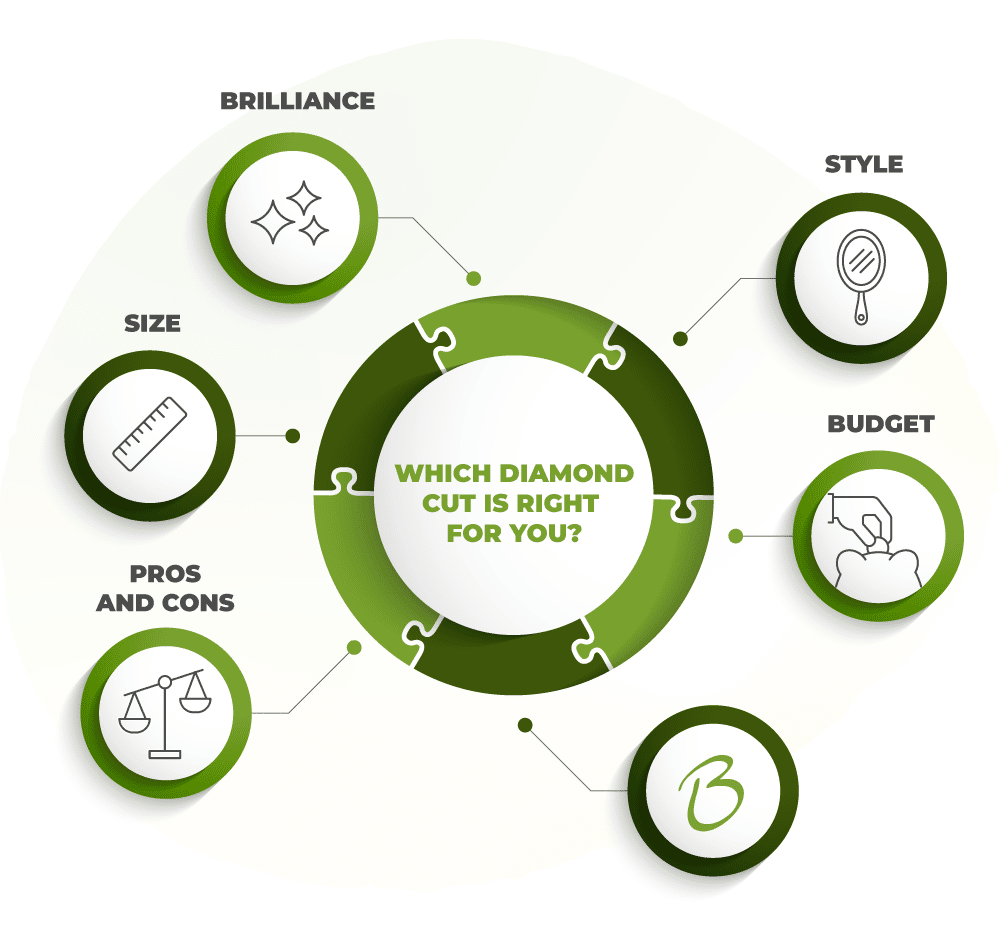
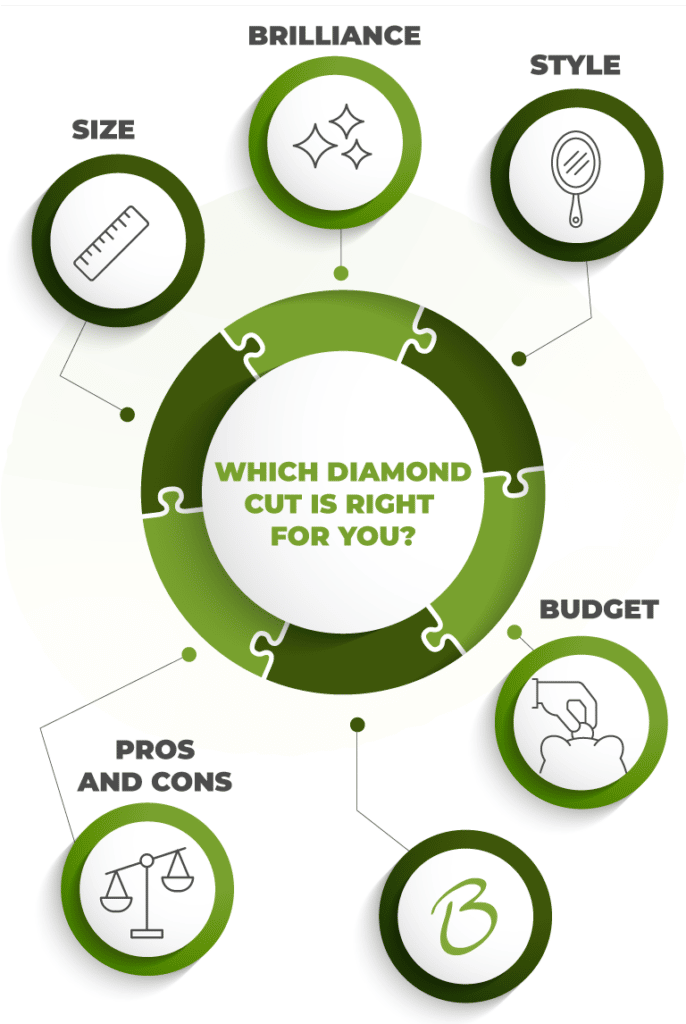
With all this information, you should feel more confident finding the perfect diamond cut for your engagement ring. A good jeweler should have a wide range of cuts, shapes, and designs for many different styles and will provide you with any additional information you may need to make your final selection. In addition to the particular cut you are looking for, there are a few other things to keep in mind when deciding which diamond shape and cut is the best for you. Some of the main points to consider when shopping for diamond engagement rings are:
-
- Your style
-
- Your budget
-
- The pros and cons of each type
-
- The size of the diamond you want
-
- The level of brilliance you want
Other things to remember are the so-called “four Cs” of diamonds: the cut, color, clarity, and carat of the diamond you are looking for. You may also want to pay attention to the particular setting of the diamond in the ring itself and the metals used in the actual ring. Top-notch jewelers will also allow you to customize your diamond ring to match your and your partner’s unique preferences.
Find Your Favorite Diamond Cut at Brinker’s Jewelers
The most important thing when shopping for the perfect engagement ring diamond cut is to have the best jeweler as your partner. Since 1972, Brinker’s Jewelers has been such a partner, offering the best selection of diamonds, watches, and accessories for all styles and budgets.
With over 400 years of combined experience, Brinker’s helpful staff of jewelers, repair specialists, appraisal experts, and buyers will help you navigate the exciting but complex world of diamond engagement rings with no extra fuss. You already have enough on your plate as you get ready to pop the question, and the last thing you need is additional stress when buying the ring. So, if you’re making a lifelong commitment to the person you love and want to find the perfect diamond cut for the two of you, visit Brinker’s Jewelers today!




